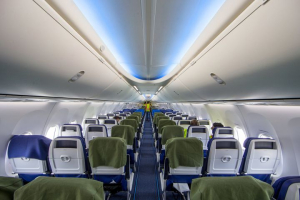For those who do not fly too frequently in long haul flights, it is always an adventure when you get to jet set around the world, taking in all of the perks offered by a full service airline. From a virtually unlimited amount of booze to your choice of meals as well as a slew of in-flight movies and radio stations to pick from, it can be quite an experience for the first time flyer. However, times are definitely a-changing. American Airlines noticed that 90% of their passengers have their personal mobile devices on board, and arrived at the conjecture that most of them would prefer to view a downloaded movie of their choice as opposed to leaving things to chance by seeing what the airline has in store for the in-flight programming that particular month.
This train of thought has led to American Airlines taking the decision to drop its seat-back screens from its in-flight entertainment on a 100 new Boeing 737 Max jets. Citing the reason that these smartphones, tablets or laptops tend to be able to do a far better job as opposed to the small, individual screens that you see at the back of the headrest, are you as a regular passenger with American Airlines happy with this development? The new single aisle Boeing 737 Max will make its debut on American Airlines routes some time later this year, and the removal of the individual screens does not translate to the end of the world. After all, this jet is only going to be used in short haul flights, and not trans-continental ones, so it does make sense when you think about it. Thankfully, American Airlines will be introducing satellite-based high-speed internet connectivity to its planes courtesy of Gogo and Via Sat, which ought to see whoops of joy echo around as such connectivity would be superior to the current sluggish one that is on offer.
According to American Airlines, “More than 90 percent of our passengers already bring a device or screen with them when they fly. Those phones and tablets are continually upgraded, they’re easy to use and, most importantly, they are the technology our customers have chosen.”
We do wonder whether other airlines will follow suit. It would definitely help to save the costs in the long run, since there is no need to install these screens in the first place. Also, there would be no licensing issues or headaches involved too, as they would not be screening any movies for the economy class segment of passengers.
It remains to be seen whether this change would also result in a different kind of experience for Business and First Class passengers. Would such level of passengers like to have video on demand on a personal screen? I suppose the screen will be there for both levels of passengers, since the seat itself will incorporate such luxury like a personal display. The question is, will there be content shown then? After all, the airline industry has certainly become a whole lot more competitive these days and all margins should be taken into consideration.

















